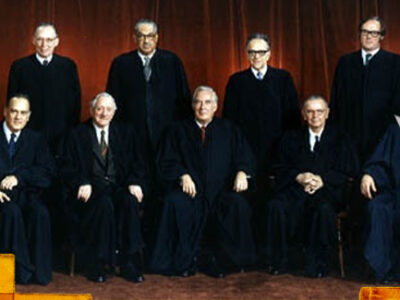The U.S. Supreme Court’s decision in Gonzales v. Carhart is an important step away from the cruel practice of abortion. Although it upholds only the Partial-birth Abortion Ban Act of 2003 (President Clinton vetoed similar bans twice) and therefore does not deal with the bulk of abortions, the opinion at least recognizes that taking a living, sentient youngster part way out of the safety of a mother’s womb and then killing it is such a heinous act that the state, in this case, the federal government, may prohibit it.
Justice Kennedy’s opinion contains a nurse’s description of a partial birth abortion, clinically called an “intact dilation and evacuation.” A warning to the squeamish, the description is graphic and grisly. Here is what the nurse wrote about a late-term abortion, which is included in the Court’s majority opinion: “Dr. Haskell went in with forceps and grabbed the baby’s legs and pulled them down into the birth canal. Then he delivered the baby’s body and the arms—everything but the head. The doctor kept the head right inside the uterus … The baby’s little fingers were clasping and unclasping, and his little feet were kicking. Then the doctor stuck the scissors in the back of his head, and the baby’s arms jerked out, like a startle reaction, like a flinch, like a baby does when he thinks he is going to fall. The doctor opened up the scissors, stuck a high-powered suction tube into the opening, and sucked the baby’s brains out. Now the baby went completely limp. … He cut the umbilical cord and delivered the placenta. He threw the baby in a pan, along with the placenta and the instruments he had just used.”
Justice Ginsburg’s dissent calls the majority opinion “alarming” but apparently does not view the partial-birth abortion procedure with the same alarm. Her concern is for possible “health risks” to the mother if partial-birth abortions are banned since some physicians regard them as more protective of the health of the mother. However, medical opinion is divided on that question and the Court correctly concluded that Congress was not precluded from passing legislation in those circumstances. (The statute does contain a clear exception for mothers whose lives are endangered if an abortion using this method becomes necessary.)
Those who support the civilized protection of the most vulnerable members of society—babies in the womb—should be grateful for this small step away from barbarity. The opinion, with its plain and painful presentation of what is involved in an abortion—in the womb and just outside—should give pause to those who have not decided on this issue, and create doubts even among those who have argued for abortion in the past.




